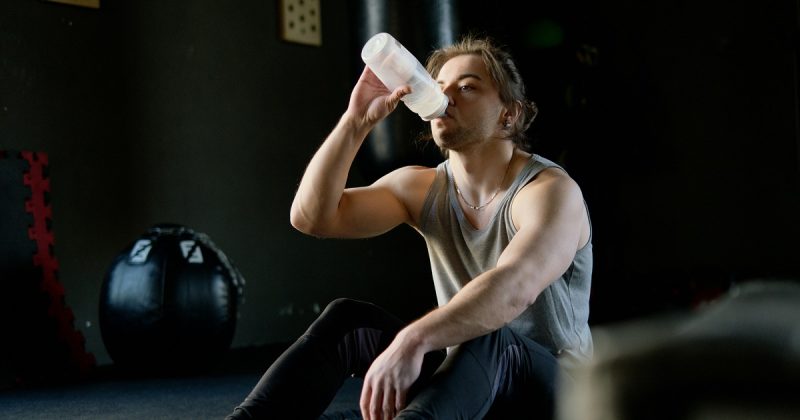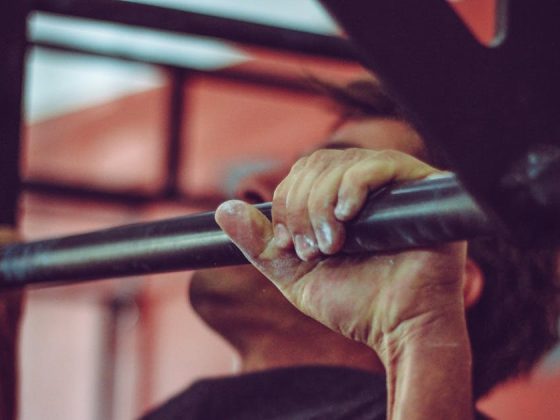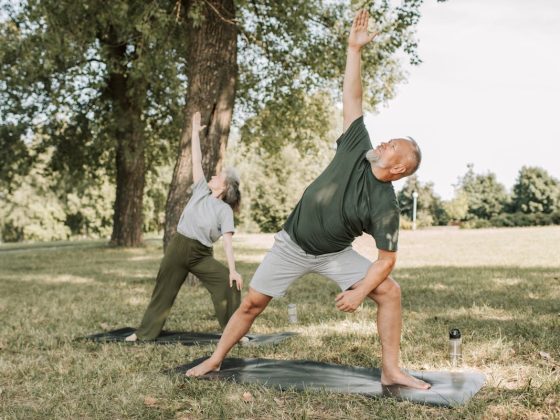Achieving fitness goals, whether they involve building muscle, improving endurance, or enhancing overall performance, requires more than just pushing yourself hard during workouts. Equally important is the recovery process. When you exercise, you put stress on your muscles, bones, and connective tissues. Without proper recovery, your body may not repair or adapt optimally, leading to diminished performance or even injury. Understanding the best recovery methods after workout can make a significant difference in how fast you recover, how well you perform in future sessions, and how sustainable your fitness routine is in the long term.
In this article, we’ll dive deep into the best recovery methods after workout to enhance your performance, reduce soreness, and boost your overall physical and mental well-being.
12 Best Recovery Methods After Workout
Hydration: The Foundation of Recovery
Hydration is one of the simplest yet most effective recovery strategies. Water is essential for almost every function in your body, including muscle recovery, joint lubrication, and the transport of nutrients to cells. After a workout, your body loses water through sweat and needs to replace the fluids lost to maintain homeostasis and aid recovery.
Why It’s Important:
- Dehydration can impair muscle function and delay the healing process.
- Proper hydration helps in the removal of metabolic waste products like lactic acid, which can contribute to muscle soreness.
- Water aids in nutrient absorption, which is crucial for muscle repair.
Pro Tip: Drink water consistently throughout the day, and not just after your workout. Consider adding electrolytes to your post-workout hydration routine, especially if you engage in high-intensity or prolonged exercise.
Active Recovery: Keep Moving Gently
While it may seem counterintuitive, moving after a workout can actually enhance recovery. Engaging in light, low-intensity exercise, also known as active recovery, helps increase blood flow to muscles, delivering oxygen and nutrients that are necessary for repair.
Examples of Active Recovery:
- Walking
- Light swimming
- Cycling at a low intensity
- Stretching or yoga
Why It’s Important: Active recovery helps flush out lactic acid and other metabolic byproducts from your muscles. It also promotes better circulation, helping reduce soreness and stiffness.
Pro Tip: Incorporate active recovery on rest days or after particularly intense training sessions to promote faster healing and to keep your muscles supple and ready for the next workout.
Sleep: The Ultimate Recovery Tool
Sleep is often overlooked, yet it’s one of the most crucial recovery methods. When you sleep, your body goes into repair mode, releasing growth hormones that are vital for muscle repair and tissue growth. Deep sleep is particularly important, as it’s when the body focuses most on repairing muscle fibers that have been broken down during exercise.
Why It’s Important:
- Sleep deprivation can increase the production of cortisol, a stress hormone that can hinder muscle recovery.
- During sleep, protein synthesis ramps up, allowing muscles to rebuild stronger.
- Cognitive function and reaction times, both critical for athletic performance, improve with adequate rest.
Pro Tip: Aim for 7-9 hours of sleep per night, and focus on creating a sleep-friendly environment by maintaining a cool, dark, and quiet space.
Protein Intake: Building Blocks of Muscle Recovery
Muscles are made primarily of protein, and after a workout, they need amino acids (the building blocks of protein) to repair and grow. Consuming protein after a workout can kickstart the muscle repair process, helping to reduce soreness and enhance recovery.
Best Protein Sources Post-Workout:
- Whey or plant-based protein shakes
- Lean meats like chicken or turkey
- Fish, especially those rich in omega-3 fatty acids like salmon
- Eggs
- Greek yogurt or cottage cheese
Why It’s Important:
- Protein helps repair damaged muscle fibers and promotes muscle growth.
- Studies show that consuming protein within 30 minutes to 2 hours after exercise maximizes the recovery process.
Pro Tip: Aim for 20-30 grams of high-quality protein after your workout to optimize recovery.
Carbohydrate Replenishment: Restoring Energy
Carbohydrates are your body’s primary fuel source, and after an intense workout, your glycogen stores (the stored form of carbs in muscles) are depleted. Replenishing these stores is crucial for muscle recovery and energy restoration.
Why It’s Important:
- Carbohydrates restore glycogen levels, which are crucial for muscle function in your next workout.
- Combining carbs with protein post-workout can enhance muscle protein synthesis, leading to better recovery.
Best Carbohydrate Sources Post-Workout:
- Sweet potatoes
- Brown rice or quinoa
- Oats
- Whole-grain bread
- Fruits like bananas or berries
Pro Tip: Pair your carbs with protein for a balanced post-workout meal that supports both muscle repair and energy restoration.
Stretching and Flexibility Training
After a workout, your muscles may feel tight and stiff, which can increase the risk of injury. Stretching not only helps relieve that tightness but also improves flexibility and joint mobility, reducing muscle imbalances that could lead to future injuries.
Why It’s Important:
- Stretching helps reduce muscle stiffness, improving overall range of motion and flexibility.
- It enhances blood circulation to the muscles, aiding in the recovery process.
Pro Tip: Incorporate both static and dynamic stretches post-workout. Dynamic stretches (like leg swings) improve mobility, while static stretches (like hamstring stretches) can help lengthen and relax tight muscles.
Foam Rolling: Self-Myofascial Release
Foam rolling is a popular recovery method that helps release muscle tightness, knots, and adhesions in the fascia (the connective tissue surrounding muscles). It’s a form of self-myofascial release that improves blood flow to muscles and helps alleviate soreness.
Why It’s Important:
- Foam rolling helps break up adhesions and scar tissue that can limit mobility.
- It promotes better circulation, which aids in muscle recovery.
- Rolling can reduce delayed-onset muscle soreness (DOMS), which usually sets in 24-48 hours after intense exercise.
Pro Tip: Use a foam roller on major muscle groups like your calves, quads, hamstrings, and back. Spend about 1-2 minutes per muscle group, focusing on areas that feel particularly tight.
Cold Therapy: Reducing Inflammation and Soreness
Cold therapy, such as ice baths or applying ice packs, is a common recovery method used by athletes to reduce inflammation, swelling, and muscle soreness. Cold temperatures constrict blood vessels, which can help reduce swelling and promote recovery.
Why It’s Important:
- Cold therapy helps minimize muscle damage caused by intense exercise.
- It can reduce the perception of soreness, making it easier to stay consistent with workouts.
Pro Tip: Ice baths or cold showers immediately after a workout can reduce inflammation, but limit the exposure to 10-15 minutes to avoid potential risks like hypothermia.
Massage: Promoting Relaxation and Recovery
Massage therapy is not just a luxurious treat; it’s a powerful recovery tool. It helps increase blood flow, reduce muscle tension, and promote the removal of waste products from muscles, like lactic acid.
Why It’s Important:
- Massage promotes muscle relaxation, reducing the likelihood of cramps or spasms.
- It helps in lymphatic drainage, aiding in the removal of toxins from the body.
- Regular massage can improve flexibility and muscle function over time.
Pro Tip: Incorporate regular massage sessions into your routine, especially after intense workouts or during recovery phases.
Compression Therapy: Enhancing Circulation
Compression therapy involves wearing tight garments like compression sleeves or socks to apply pressure to muscles, which can help reduce swelling, improve circulation, and speed up the recovery process.
Why It’s Important:
- Compression helps increase blood flow to muscles, delivering oxygen and nutrients essential for recovery.
- It reduces muscle fatigue and soreness, particularly after endurance-based activities like running.
Pro Tip: Consider wearing compression garments for several hours after a workout or during periods of rest to maximize recovery benefits.
Proper Nutrition: Balanced Diet for Recovery
A well-rounded diet is the foundation of optimal recovery. While protein and carbohydrates are crucial post-workout, it’s essential to maintain a balanced diet rich in vitamins, minerals, and healthy fats to support overall recovery.
Key Nutrients for Recovery:
- Antioxidants (found in fruits and vegetables) help combat oxidative stress from exercise.
- Omega-3 fatty acids (from fish like salmon) reduce inflammation and support muscle repair.
- Vitamins and minerals (such as magnesium, vitamin C, and zinc) play a crucial role in tissue repair, immune function, and energy production.
Pro Tip: Incorporate a variety of whole foods into your diet, including leafy greens, lean proteins, whole grains, and healthy fats, to fuel your body for optimal recovery.
Mindful Recovery: Mental Relaxation Techniques
Recovery is not just physical; it’s also mental. Practices such as mindfulness, meditation, and breathing exercises can help reduce stress and improve overall recovery by promoting relaxation.
Why It’s Important:
- Mental stress can contribute to physical tension and slower recovery.
- Mindfulness techniques help lower cortisol levels, which can improve muscle recovery and overall well-being.
Pro Tip: Spend 5-10 minutes practicing deep breathing or meditation post-workout to promote relaxation and facilitate recovery.
Recovery is an Essential Part of Any Fitness Journey
Recovery is an essential part of any fitness journey. The best recovery methods after workout are not just about reducing soreness but also about optimizing your body’s ability to rebuild and improve. By integrating proper hydration, nutrition, sleep, and active recovery techniques into your routine, you can enhance your overall performance and well-being.
Ultimately, the goal is to find the recovery methods that work best for your body and your fitness goals. Whether it’s focusing on foam rolling, prioritizing sleep, or improving your post-workout nutrition, each method contributes to a well-rounded recovery process. Remember, how you recover today impacts how well you perform tomorrow!




